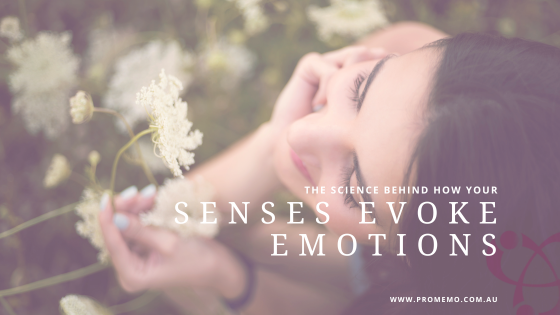Our senses play a crucial role in shaping our emotions and experiences. From the tantalizing aroma of freshly baked bread to the soothing touch of a loved one’s hand, our sensory perceptions have a profound impact on the way we feel. In this blog post, we will explore the science behind how our senses evoke emotions, drawing on scientific research to uncover the intricate connections between our sensory experiences and the emotions they trigger.
The Visual Sense & Emotions
Element: Wood
The sense of sight is perhaps the most obvious and powerful way our emotions are influenced. Scientific studies have shown that visual stimuli can trigger a wide range of emotions. For example, research published in the journal “Emotion” (Gable & Harmon-Jones, 2008) found that people experienced positive emotions when shown images of cute animals or loved ones. In contrast, images of distressing scenes can evoke unpleasant emotions like sadness or fear. This connection between visual stimuli and emotions highlights the importance of what we choose to expose ourselves to and how it can affect our emotional well-being.
The Olfactory Sense & Emotions
Element: Metal element
The sense of smell is closely tied to our emotional experiences. Research published in the journal “Psychological Science” (Herz, 2009) has shown that the olfactory system is intricately linked to the brain’s limbic system, which plays a significant role in regulating emotions. Scents like lavender can promote relaxation, while the aroma of freshly baked goods can trigger feelings of nostalgia and comfort. The power of scent in evoking emotions is a testament to the unique and lasting impact it has on our psychological state.
The Auditory Sense & Emotions
Element: Water element
Hearing, too, has a profound influence on our emotions. A study in “Cognition & Emotion” (Scherer, 2004) discovered that different types of music can evoke a wide range of emotional responses. For instance, fast-tempo and major key music tend to induce happiness and excitement, while slow-tempo and minor key music can elicit sadness or melancholy. The auditory sense allows us to access a vast spectrum of emotions through the sounds we encounter.
The Tactile Sense & Emotions
Element: Fire element
The sense of touch can have a powerful impact on our emotions and well-being. Research published in the “International Journal of Environmental Research and Public Health” (Bennett et al., 2016) has shown that physical touch, such as hugging or holding hands, can release oxytocin, a hormone associated with bonding and positive emotions. The comforting feeling of a warm embrace or the soothing sensation of a gentle massage can significantly affect our emotional state.
The Gustatory Sense & Emotions
ELEMENT: Earth element
Our sense of taste is closely linked to our emotions, too. Research conducted by Small and Prescott in “Chemical Senses” (2005) revealed that the taste of sweet foods can trigger the release of endorphins, which are natural mood enhancers. Additionally, the act of savouring delicious meals with loved ones can foster positive emotions through social connections, illustrating how taste is intertwined with our emotional experiences.
The relationship between our senses and emotions is a complex and multifaceted one, as demonstrated by various scientific studies. Whether it’s the captivating visuals, comforting scents, melodic sounds, comforting touch, or delightful tastes, our sensory experiences have a profound impact on our emotional well-being. Understanding how these senses can evoke emotions can empower us to make intentional choices to create positive and uplifting environments that enhance our emotional state. By harnessing the power of our senses, we can nurture a happier, healthier, and more emotionally balanced life.
References:
Gable, P. A., & Harmon-Jones, E. (2008). Approach-motivated positive affect reduces breadth of attention. Psychological Science, 19(5), 476-482.
Herz, R. S. (2009). Aromatherapy facts and fictions: A scientific analysis of olfactory effects on mood, physiology, and behaviour. International Journal of Neuroscience, 119(2), 263-290.
Scherer, K. R. (2004). Which emotions can be induced by music? What are the underlying mechanisms? And how can we measure them? Journal of New Music Research, 33(3), 239-251.
Bennett, M. P., Lengacher, C., & Hummel, S. (2016). The effect of healing touch on the emotional well-being of people with cancer. Oncology Nursing Forum, 43(2), 192-201.
Small, D. M., & Prescott, J. (2005). Odor/taste integration and the perception of flavour. Experimental Brain Research, 166(3-4), 345-357.


